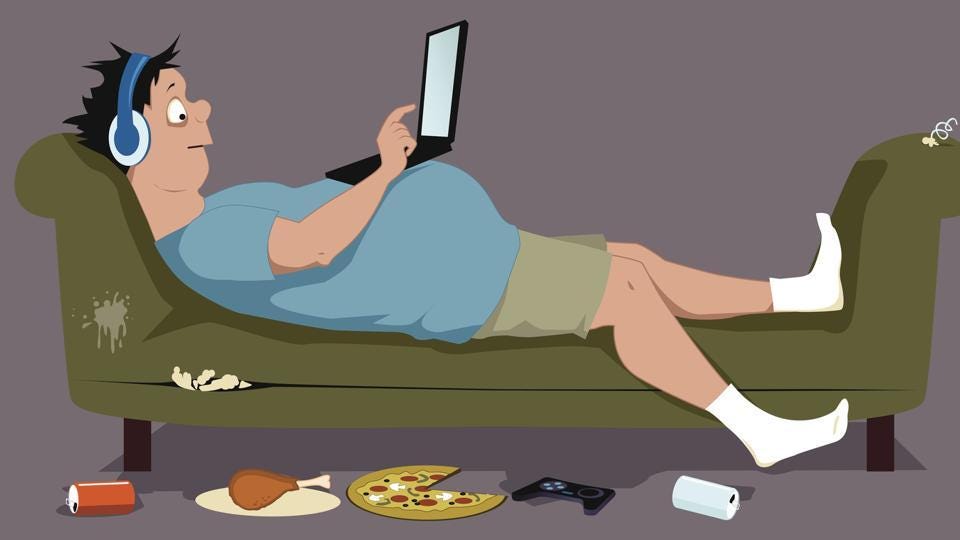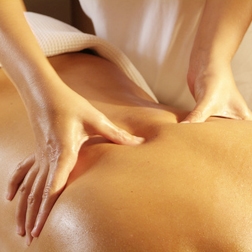Health Hazards of Prolonged Sitting and Massage Therapy as a Mitigation Strategy

In today’s fast-paced world, technological advancements have revolutionized our daily lives, transforming the way we work, communicate, and entertain ourselves. However, with these conveniences come sedentary lifestyles, characterized by prolonged periods of sitting. While sitting is a common aspect of modern life, excessive sedentary behavior has emerged as a significant health concern, contributing to a myriad of adverse health outcomes.
Prolonged sitting has been linked to a plethora of health problems, supported by a robust body of scientific evidence. A study published in the American Journal of Epidemiology found that individuals who sit for prolonged periods have a higher risk of mortality from all causes, independent of physical activity levels (Matthews et al., 2012). This underscores the importance of reducing sedentary behavior to promote overall health and longevity.
Furthermore, sedentary behavior has been identified as a significant risk factor for cardiovascular diseases. A meta-analysis of prospective cohort studies revealed that prolonged sitting is associated with a higher risk of cardiovascular events, including heart attacks and strokes (Biswas et al., 2015). The detrimental effects of sedentary behavior on cardiovascular health are mediated by factors such as reduced physical activity, impaired blood flow, and metabolic dysfunction.

Musculoskeletal issues are also prevalent among individuals who sit for prolonged periods. Maintaining a static posture for extended durations puts excessive strain on the spine, leading to back pain, spinal disc compression, and poor posture. Additionally, prolonged sitting contributes to muscle stiffness and weakness, particularly in the lower back, hips, and legs, impairing mobility and increasing the risk of injuries (Shrestha et al., 2018).
In addition to physical health consequences, prolonged sitting has detrimental effects on mental well-being. Sedentary behavior is associated with increased levels of stress, anxiety, and depression (Teychenne et al., 2010). The lack of physical activity and exposure to natural light disrupts neurotransmitter balance and impairs mood regulation. Moreover, prolonged sitting is often accompanied by social isolation and decreased social interactions, further exacerbating feelings of loneliness and depression.
Massage therapy has emerged as a promising complementary approach to mitigate the health problems caused by prolonged sitting. A systematic review published in the Journal of Alternative and Complementary Medicine highlighted the efficacy of massage therapy in reducing musculoskeletal pain and improving physical function among individuals with sedentary occupations (Crawford et al., 2016). Massage techniques such as Swedish massage, deep tissue massage, and myofascial release can alleviate muscle tension, improve circulation, and promote relaxation, thereby mitigating the adverse effects of prolonged sitting on musculoskeletal health.
Massage therapy has been shown to have beneficial effects on cardiovascular health. A randomized controlled trial conducted by Field et al. (2010) demonstrated that regular massage sessions led to significant reductions in blood pressure and heart rate among adults with hypertension. Massage therapy promotes vasodilation, enhances blood flow, and reduces sympathetic nervous system activity, contributing to improved cardiovascular function.

Separately, massage therapy has been found to have positive effects on mental well-being. A meta-analysis of randomized controlled trials revealed that massage therapy is associated with reductions in perceived stress, anxiety, and depressive symptoms (Moyer et al., 2004). Massage promotes the release of endorphins and serotonin, neurotransmitters that induce feelings of relaxation and happiness, thereby improving mood and overall psychological well-being.
The pervasive nature of sedentary behavior in modern society poses significant health risks, ranging from obesity and cardiovascular diseases to musculoskeletal disorders and mental health issues. Recognizing the detrimental effects of prolonged sitting is imperative for implementing strategies to mitigate its impact on public health. By promoting regular physical activity, incorporating movement breaks, and integrating massage therapy as a complementary approach, we can combat the sedentary epidemic and promote overall health and well-being.
Call to make appointment: (650) 328-9400 or book online.
References:
- Balk, E. M., et al. (2015). Effect of Sedentary Behavior on Cardiovascular Disease Risk Factors: A Meta-analysis. American Journal of Preventive Medicine, 49(4), 534–542.
- Biswas, A., et al. (2015). Sedentary Time and Its Association With Risk for Disease Incidence, Mortality, and Hospitalization in Adults: A Systematic Review and Meta-analysis. Annals of Internal Medicine, 162(2), 123–132.
- Chau, J. Y., et al. (2013). Sedentary Behaviour and Risk of Mortality from All-causes and Cardiovascular Disease. Journal of the American College of Cardiology, 62(8), 704–712.
- Crawford, C., et al. (2016). The Impact of Massage Therapy on Function in Pain Populations—A Systematic Review and Meta-analysis of Randomized Controlled Trials: Part I, Patients Experiencing Pain in the General Population. Journal of Alternative and Complementary Medicine, 22(6), 414–425.
- Field, T., et al. (2010). High Blood Pressure and Associated Symptoms Were Reduced by Massage Therapy. Journal of Bodywork and Movement Therapies, 14(4), 318–325.
- Matthews, C. E., et al. (2012). Amount of Time Spent in Sedentary Behaviors and Cause-specific Mortality in US Adults. American Journal of Clinical Nutrition, 95(2), 437–445.
- Moyer, C. A., et al. (2004). A Meta-analysis of Massage Therapy Research. Psychological Bulletin, 130(1), 3–18.
- Shrestha, N., et al. (2018). Sitting Time, Physical Activity, and Risk of Obstructive Sleep Apnea in Adults: A Meta-analysis. Respiratory Medicine, 137, 181–189.
- Teychenne, M., et al. (2010). Sedentary Behavior and Anxiety: Association and Underlying Mechanisms. Sports Medicine, 40(7), 657–667.
